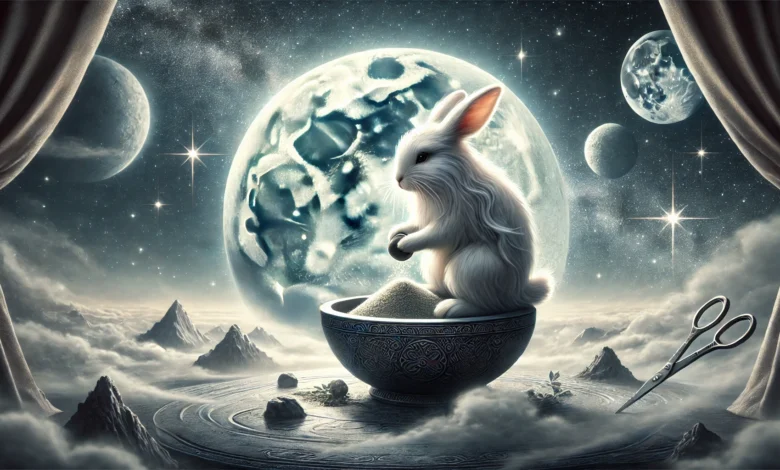Moon Bunny: A Myth Rooted in Lunar Legends

Introduction
The Moon Bunny or the popularly known is the Jade Rabbit is folklore character popular in the East Asian region. The Chinese regard it as a moon dweller and believe it makes medicine for the gods to achieve eternal life. But who or what is this rabbit that has lived in the moon and has persisted in being seemingly mysterious and wondrous in the societies of the modern world? Now that we know the Moon Bunny, it’s time to explore more about it.
The Origin Story of the Moon Bunny: Myth Meets Magic
The Moon Bunny originates from a Chinese folk tale: most people can’t pinpoint its exact role, but it grinds medicine on the moon. Some sources have it that this rabbit had risen to the heavenly realm through great sacrificial reaction, having been a disguised god whom the rabbit had prepared in a stew. So, to punish her, the deity agrees to let her shall never die and live in the moon. This story reset in circulation in East Asia and bestowed on the Moon Bunny such associations as kindness and fidelity.
The Moon Bunny’s Role in the Mid-Autumn Festival
People in China and Vietnam celebrate the Moon Festival during a full moon. This festival is tied to ancient myths, with the celestial hare at the heart of those stories. Many believe that when they gaze at the sky, they see the figure of the hare stirring the potion of longevity. People enjoy various foods and snacks during the holiday, with mooncakes, often decorated with hare-themed stickers, being the most popular. Families and friends share them to strengthen their bonds and foster unity.
How the Moon Bunny Influences Pop Culture Today
The celestial rabbit also thrives in modern entertainment, appearing in anime and video games. One of the most recognizable examples is Usagi Tsukino from the anime ‘Sailor Moon,’ where the rabbit’s name stems from the interpretation of the myth in Japan. This enduring fairy tale continues to inspire new developments across various fields, proving that folklore remains relevant in the contemporary era.
Symbolism and Themes of the Moon Bunny in Folklore
It is not this cheerful sign on the moon, no; behind it there are such components as sacrifice, work, and eternity. Because of the East Asian cultures that dictate the standards of acceptable behavior, the story goes a long way in driving home the point that it is right to be a selfless person with a spirit that does not resign even when the odds are stacked against one. This raises questions about time, cycles, and renewal, for which the celestial hare serves as a fitting representative and holds significance in mythology.
Modern Celebrations and Art Inspired by the Moon Bunny
It now appears in paintings and sculptures, as well as showing up at fairs and carnivals, and even featuring in subculture spaces. Moreover, the tradition of the Mid-Autumn Festival still honors the legend, while modern representations of the celestial rabbit are seen on artifacts, paintings, and emojis. Furthermore, this timeless symbol continues to captivate new generations worldwide, demonstrating how their fascination can effectively be harnessed.
FAQ’s
What is the Moon Bunny?
East Asian folklore depicts the celestial hare as a mythical creature that resides on the moon.
Why do people associate the Moon Bunny with the Mid-Autumn Festival?
It represents unity and lives on the moon, becoming visible during the festival.
Where did the Moon Bunny myth originate?
The legend of the celestial rabbit originated in ancient Chinese folklore and spread to Japan and Korea.
How does modern culture represent the Moon Bunny?
The celestial rabbit appears in anime, games, and art, like the character Usagi in ‘Sailor Moon.’
What does the Moon Bunny symbolize?
It symbolizes selflessness, immortality, and hard work in folklore.
Conclusion
To this day, the Moon Bunny stands as one of the most tender mascots, embodying myths, cultures, and the lunar mysteries. Despite its mystery and obscurity, the enchanting and delicate celestial creature fits perfectly in modern art. As more people become aware of its presence and aesthetic significance, its influence grows in festivals, art, and mass media, blending history with the present in a magical way. Whether during the Mid-Autumn Festival or simply gazing at the full moon, this figure invites reflection, revealing deeper layers of meaning..




